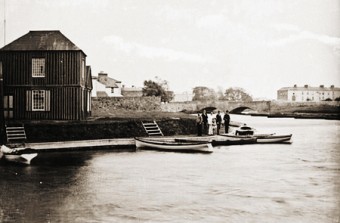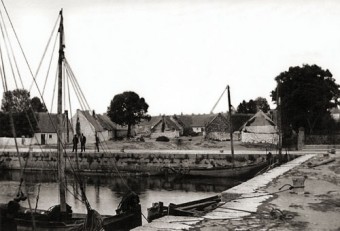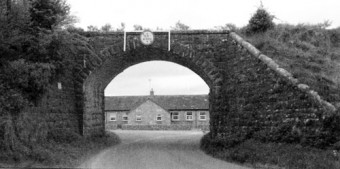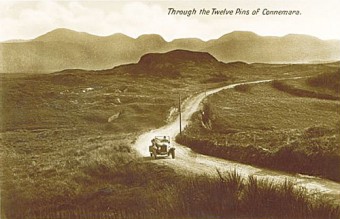Search Results for 'Congested Districts Board'
10 results found.
Post office communications

This photograph of a group of postmen was taken on December 17 1928 outside the General Post Office in Eglinton Street. The sorting office was inside the double gate, as was the long narrow passage that brought one into the back of the post office. The car in the background was a Model T. Notice the cobbled footpath.
Was James Hack Tuke the Oskar Shindler of his day?
A surprising rescuer of the Tuke assisted emigration scheme from the west of Ireland came from the London government. After the first group of 1,315 people had sailed from Galway for America on April 28 1882, the Tukes’ emigration fund was practically exhausted. Yet the demand for places grew each day. Now more than 6,000 applications, mainly from the Clifden area, but also from Belmullet, Newport and Oughterard, poured into the Clifden union where James Hack Tuke had his office. While poverty and famine remained endemic in the west of Ireland, people with spirit must have felt that the day-to-day grind was never ending. The threat of another Great Famine was very real. They wanted a new life.
The Galway-Clifden Railway

This railway line was built under the auspices of the Congested Districts Board and was of enormous importance to the people of all of Connemara. It was a great feat of engineering from the point of departure westwards from Galway station with the necessary building of bridges and tunnels by Bohermore and across the Corrib itself.
Discover the working life of hookers, nobbies and zulus
The working boats which could be seen in Galway in the 19th century will be the subject of a public lecture this weekend.
The Royal Galway Yacht Club

The first rowing club to be set up on the river was Corrib Rowing and Yachting Club, and shortly afterwards the Commercial Club was founded. The inauguration of yet another club in 1882, The Royal Galway Yacht Club, provided further competition in rowing and yachting. It contributed to regattas locally by fielding crews, being included on committees, and other rowing activities, and it seems to have had a very strong yachting section.
Exhibition looks at combating poverty in 19th century Galway
The years 1891 to 1923 were among the most important in Irish history, featuring the events that would lead to independence, partition, and the civil war.
The Claddagh Quay

This photograph of the quayside in the Claddagh is one of the remarkable images in a book entitled Jane W Shackleton’s Ireland compiled by Christiaan Corlett and published by Collins Press. Jane Shackleton was given a camera and she went around Ireland with it between 1891 and 1906. She built up a remarkable collection, some of which are included in this delightful book.
The school under the railway bridge

Apart from the profound influence that teachers had on their young students at Crumlin National School, Ballyglunin, Co Galway, the passing trains on the old Claremorris-Limerick line told them all the time of day, and the seasons of the year. The old school was located practically under the railway bridge. The train passed only yards from the classrooms. “We would wave out at the trains passing....” recalls Phil Forde, who stared school there when she was three years old in 1935. “There would be extra trains during the beet campaign. The beet would all go to the station in the horse and cart, and there would be about 20 wagons after the steam engine.”


